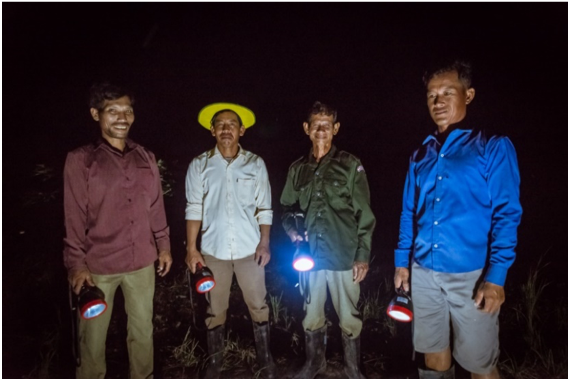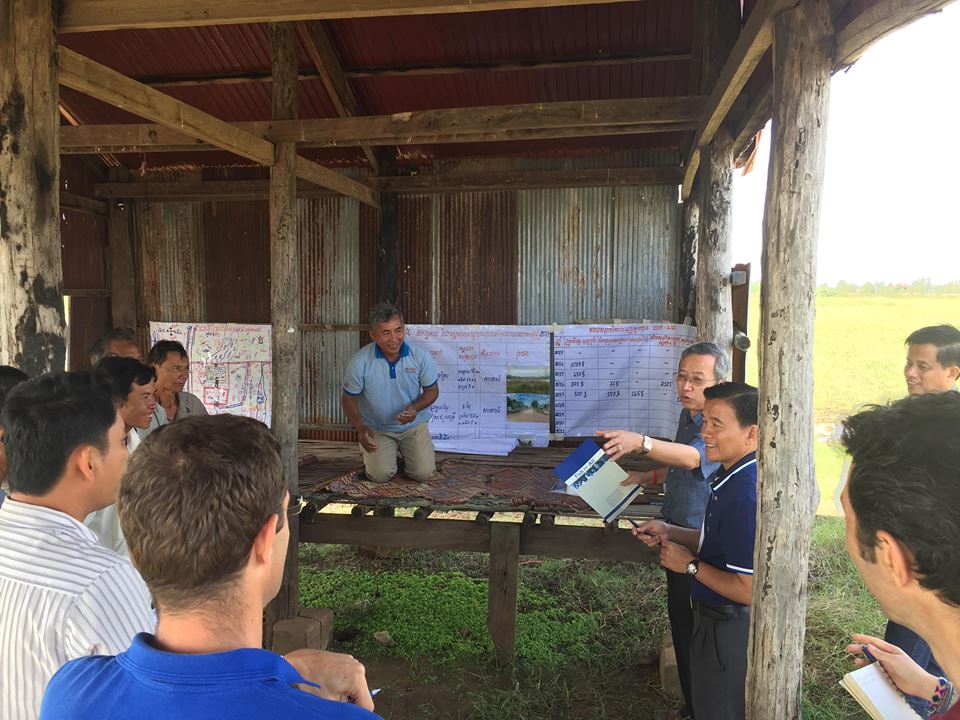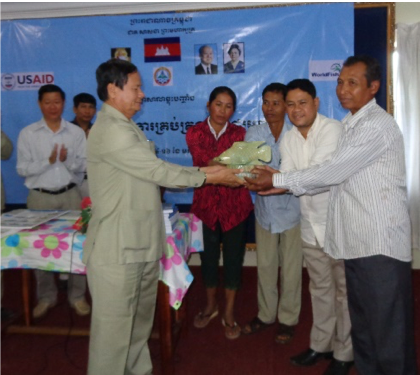
Committed community members patrol the fish refuge at night to protect it from illegal fishing. (Fani Llaurado/WorldFish)
A year ago this December, almost 100 new Community Fish Refuge management committees participated in their first workshops to present and evaluate one another’s work. In a few weeks, they will meet again to reflect on this year’s progress and set new goals. These dynamic workshops are just one component of the Feed the Future Cambodia Rice Field Fisheries II (RFF II) project led by WorldFish, which is working to improve the management of fisheries conservation areas within the rice fields of Cambodia, and improve food and nutrition security for 21,000 poor and vulnerable rural households in the Tonle Sap floodplain.
At the heart of the project are community fish refuges – bodies of water that protect wild fish during dry periods, and give them a good place to live and grow before they return to seasonally flooded rice fields. The project supports 134 committees to improve and sustainably manage their community fish refuges and connected rice field fishery systems.

The evidence-based approach employed by the project is effective in increasing the populations of highly nutritious wild fish that are available to be caught in flooded rice field systems. Results from phase one of the project showed that well-managed community fish refuges contributed to a 71% increase in fish catch by the poorest quintile of households. The project is also successfully encouraging more families to feed nutrient-rich small fish to young children at key stages of their development. From 2017-2018, the percentage of children under five eating these nutritious small fish increased by almost 50%.

His Excellency Eng Cheasan, Director General of the Fisheries Administration (FiA), other senior FiA officials and Mr. Aymeric Roussel, NRM – Rural Development Attaché, the EU Delegation to Cambodia and Co-Chair of the Technical Working Group for Fisheries, visit a community fish refuge in Siem Reap province.
A number of intervention are required for a community fish refuge to be effective, including ensuring sufficient water storage capacity, installing boundary markers and water level poles, stabilizing the surrounding bank and managing aquatic vegetation. Also key are the skills, knowledge and level of ownership of local people to plan and complete improvements to their fish refuge and protect it from illegal fishers.

Community Fish Refuge committee members receive an award recognizing their excellence
This December, as in the previous year, over one thousand community fish refuge committee members – together with local authorities and members of the Fisheries Administration – will meet together to present their results and plan the next year’s activities. These meetings are vibrant, with many committees sharing their successes and challenges. Committees who have achieved outstanding results receive awards and formal public recognition from government officials.
“Each wet season, committee members see for themselves that the approach is effective, as fish catches increase in the flooded rice fields surrounding their fish refuges. As people catch more fish, they become more motivated to protect and conserve these fish. The knowledge and ideas shared at these workshops, and the public recognition committee members receive, builds their motivation to
succeed even further.” Miratori Kim, Project Manager
By 2021, 100,000 people in Pursat, Battambang, Siem Reap and Kampong Thom will be consuming more, nutrient-rich fish at home.

This story was contributed by Peter Jackson of WorldFish.